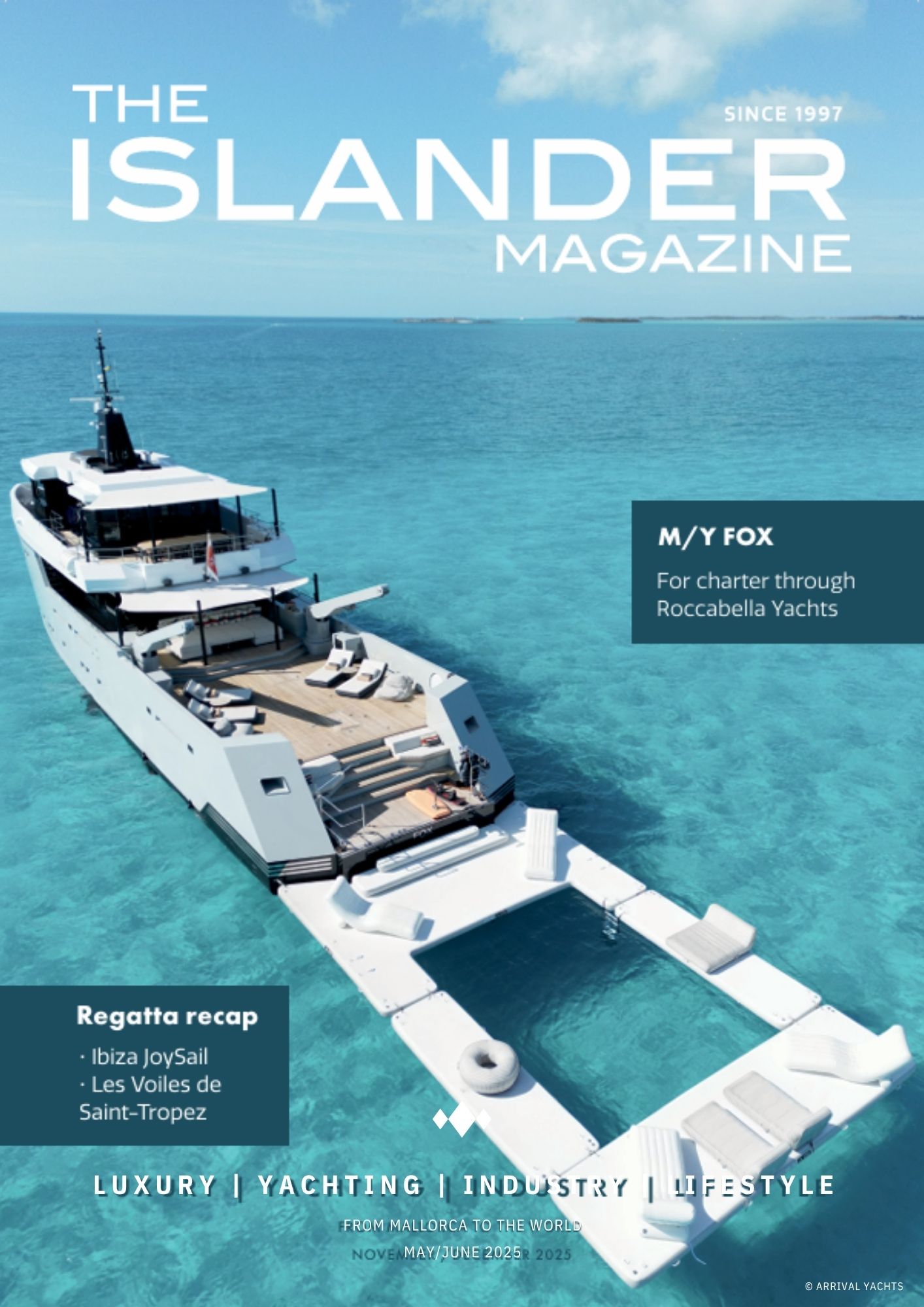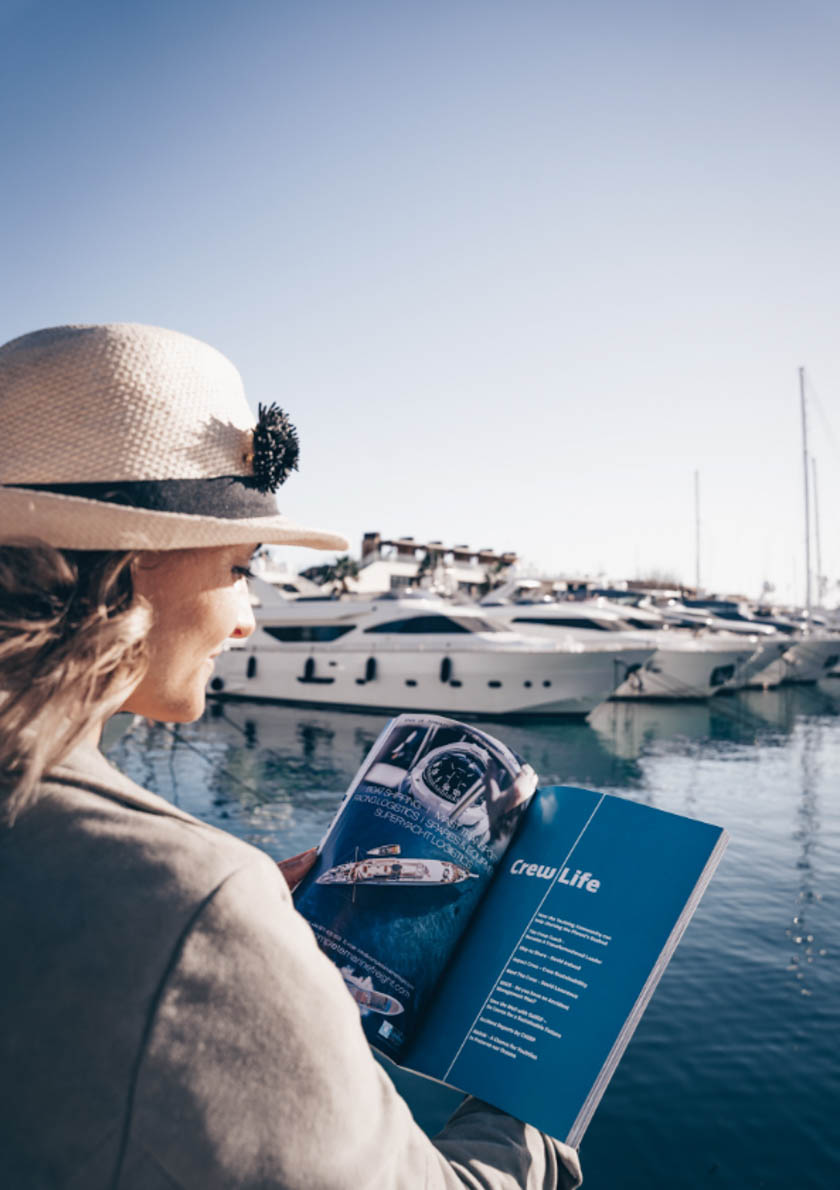
Italy, Tuscany, Viareggio, Tecnomar Velvet 83′ luxury yacht, poopdeck
Pinnacles of wealth and sophistication, superyachts are all about excess. From their opulent amenities to the amount of fuel they burn when cruising, the yachting industry is in dire need of an eco-friendly makeover. The good news is there are new trends on the horizon that are bringing positive change.
According to a recent study, the world’s superyacht fleet consumes over 32 million gallons of oil which then results in 627 million pounds of carbon dioxide being spewed into the atmosphere every year.
Considering the link between carbon dioxide and global warming, it’s clear how colossal their carbon footprint is.
Some more alarming stats from Clear Ocean Pact show that for every 10,000 crew employed, an estimated 3.2 million plastic water bottles are consumed each year. By 2050 there will be more plastic waste in our oceans than fish.
Despite all these daunting facts, there is some good news in the forecast.
Both the yachting sector and their clients have demonstrated an increasing interest in minimizing their environmental impact and a shift towards a greener direction.
Back in 2005, Germany-based shipyard Lürssen launched Ice, the first yacht in the world powered by azipods – electric podded azimuth thrusters. Azipods only require a diesel generator to supply electricity for its motor, making it more fuel-efficient and offering exceptionally low levels of emissions, sound, and vibrations.
Ten years later, Feadship launched the first eco-friendly superyacht to use a hybrid propulsion system. The 83.5m (273 ft) Savannah features a blend of a single diesel engine, three gensets, batteries, a propeller, azimuth thruster, and a streamlined hull shape.
This combination of a hybrid-electric engine with an innovative hull design has resulted in better performance and efficiency as well as fuel savings of up to 30%.
Apart from lowering fuel consumption, hybrid propulsion systems also generate less noise and vibration, which helps tackle another environmental issue that is ocean noise pollution.
And aside from incorporating eco-friendly innovations into their vessels, these two shipyards are also part of one of the many initiatives committed to securing a more sustainable future for the industry, the Water-Revolution Foundation (WRF).
With the goal of neutralizing the ecological footprint of the superyacht sector as well as preserving the oceans, this non-profit foundation counts as members of some of the biggest names in the industry, including Sanlorenzo, Heesen, Benetti, and Rybovich.
Robert van Tol, executive director of the WRF, has said:
“Sustainability is something we can no longer view as optional. But, more importantly, our industry is well-positioned to take the lead with a smart and affluent clientele and our unique connection with the ocean.”
WRF’s activities will focus primarily on promoting new technology and empowering innovation, pro-actively creating the industry’s own sustainability agenda, and investing in ocean conservation.
The growing demand for yachts to be more eco-friendly has made other shipyards – even those not part of the Water-Revolution Foundation – embrace the green movement and start building cleaner vessels.
The Dutch shipyard Oceanco, who made big waves in the industry in 2016 when it launched the world’s largest sailing superyacht, is one of these.
At 106.7 meters (350 ft), Oceanco’s Black Pearl uses a combination of wind power from her 3 masts to fill her gigantic sails together with a diesel-electric hybrid system.
Under sail, the yacht’s propellers function as a turbine generating electricity. This energy is stored in large scale batteries and used to power onboard features. She also comes with an advanced waste heat recovery system, has only reusable water bottles on-board, and is said to be able to cross the Atlantic without consuming any fossil fuel.
Yet, reducing the environmental footprint of a yacht goes beyond just switching to hybrid propulsion systems. It goes beyond the oceans too.
As demonstrated in a report from the Prince Albert II of Monaco Foundation, the health of the oceans depends on an all-encompassing approach that includes using environmentally-friendly paints and finishes, how and where you anchor, choosing the right sunscreen, and to the wood on your yacht’s furniture and flooring.
The teak wood used for decking boats, for example, comes from Teak Tectona grandis, a tree native to south and southeast Asia. And according to a report by the UN’s Food and Agriculture Organization, “Since 2010, Myanmar has lost more than 1.3 million acres of forest each year making it the third-worst country in terms of deforestation on the planet, while 70% of Myanmar’s population is heavily dependent on forests for their basic needs.”
In 2010, the Prince Albert II of Monaco Foundation in conjunction with the Monaco Yacht Show launched the Wood Forever Pact, which is devoted to the transparency of their wood sources and is engaged in the effort to adopt environmentally-sustainable practices.
A good example of a superyacht that ditched teak for an eco-conscious alternative was Newcastle’s Safira. Instead of teak, the deck is covered with an environmentally-friendly product called Esthec, which resembles wood but is made of composites and fillers.
Safira also runs on 15% biodiesel, with an interior that features reclaimed or recycled materials, and her dynamic positioning GPS allows Safira to stay precisely in place without anchoring, which saves delicate coral reefs and vulnerable underwater ecosystems.
Final thoughts
Our natural resources, oceans along with all the species with whom we share them, are in serious hot water.
With so many technological advancements and an increasingly engaged industry, there’s simply no excuse not to make a difference. It’s evident that some players are taking the lead on this.
Adopting eco-friendly and sustainable practices doesn’t mean sacrificing luxury or performance. It means truly valuing the natural environment with an emphasis on enjoying it for many years to come.
Casper Ohm is the editor-in-chief at Water-Pollution.org.uk, an outlet intended to raise awareness of the alarming levels of water pollution in our planet’s oceans. When he isn’t scuba diving and collecting data in the far corners of the world, he lives in New York with his family.








0 Comments